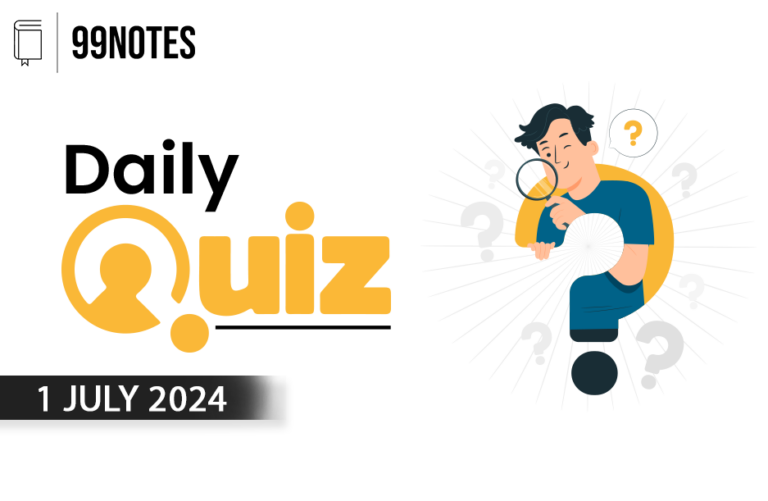29 April 2025: The Hindu Editorial Analysis
1. Constitutional Anomaly: Vacant Office of Deputy Speaker of Lok Sabha.
(Source – Page 8, The Hindu International Edition)
| Topic: GS Paper 2 – Polity & Governance: Indian Constitution, Parliamentary System. |
| Context |
|
Constitutional Provision
- Article 93 of the Indian Constitution mandates that the Lok Sabha shall, as soon as may be, choose two members to be Speaker and Deputy Speaker.
- The Constitution does not specify a timeline but implies urgency through the phrase “as soon as may be.”
Role and Importance of the Deputy Speaker
- Presiding Authority: Steps in during Speaker’s absence; essential for uninterrupted functioning of the House.
- Impartial Arbiter: Like the Speaker, expected to act above party lines when in chair.
- Strengthens Oversight: A non-ruling party member often gets the position to maintain balance and transparency.
- Symbol of Bipartisanship: Reflects the spirit of cooperative federalism and inclusive governance.
Present Issue
- Since the constitution of the 17th Lok Sabha in 2019, the Deputy Speaker’s post has remained vacant, despite completion of almost the entire term.
- This breaks from convention where the Deputy Speaker is elected within a few weeks of the Lok Sabha’s first sitting.
- The opposition has alleged that this is a deliberate act to weaken parliamentary accountability and consolidate power.
Critical Analysis
- Violation of Constitutional Spirit: While there is no strict deadline, prolonged delay undermines the integrity of parliamentary processes.
- Checks and Balances Compromised: A vacant Deputy Speaker limits redundancy in leadership and diminishes internal checks within the legislature.
- Precedent Risk: If unaddressed, this could become a dangerous precedent, allowing future governments to bypass essential offices.
- Judicial Review: Though the matter has reached the Supreme Court, it has been cautious in intervening in legislative matters.
Way Forward
- Institutionalising Timelines: Parliament must adopt Rules of Procedure or amendments mandating a time-bound election to key posts like Speaker and Deputy Speaker.
- Political Consensus: Government and Opposition must uphold conventions through constructive dialogue.
- Judicial Clarity: Courts may need to interpret “as soon as may be” to avoid further erosion of constitutional intent.
| Practice Question: The office of the Deputy Speaker is more than ceremonial and holds constitutional significance. In the light of the prolonged vacancy in the 17th Lok Sabha, critically examine the constitutional and democratic implications of suchalapse. (Answer in 250 words) |
2. Role in a Risk Society: How Women Bear a Disproportionate Burden
| Topic: GS Paper 1,2 & 4 – Indian Society, Role of Women, Governance, Vulnerable Sections, Ethics, Gender Justice. |
| Context |
|
Understanding a “Risk Society”
- The term originates from sociologist Ulrich Beck, describing a world shaped more by manufactured risks (e.g., climate change, financial crashes, pandemics) than natural threats.
- In such societies, risks are often unevenly distributed, and women—especially from marginalized communities—bear the brunt.
How Women Face a Disproportionate Burden
- Climate Change: Women in agrarian and coastal communities face increased workload, displacement, and food insecurity.
- Pandemics: During COVID-19, women were overrepresented in caregiving roles and underprotected in terms of healthcare and employment security.
- Conflict and Migration: Women are more vulnerable to sexual violence, trafficking, and loss of reproductive health services during crises.
- Economic Disparities: Wage gaps, informal employment, and job losses post-disaster hit women hardest.
- Digital Divide: In disaster response and education, lack of access to digital tools further marginalizes women.
Gendered Social Structures
- Pre-existing patriarchal norms exacerbate vulnerabilities—limited mobility, lower decision-making power, and greater caregiving expectations.
- Crises expose and magnify these inequalities.
Needed Reforms
- Gender-Responsive Planning: Risk mitigation and disaster recovery plans must include gender-specific strategies.
- Social Protection Nets: Cash transfers, food security, and health coverage tailored to women’s needs.
- Leadership and Representation: Inclusion of women in decision-making roles across policy, science, and governance.
- Intersectional Approach: Consider caste, class, disability, and geographic location in gender planning.
Conclusion / Way Forward
Crises are no longer rare events—they are systemic and ongoing. Women’s vulnerability in a risk society is not just a humanitarian issue but a democratic and developmental challenge. Gender equity must move from peripheral to central in all policy discourse, particularly around risk management and resilience-building.
| Practice Question: In the context of an increasingly crisis-prone world, examine how systemic risks disproportionately affect women. What policy and institutional changes are necessary to build gender resilience in a “risk society”? (Answer in 250 words). |
Read more – 28 April 2025: The Hindu Editorial Analysis



